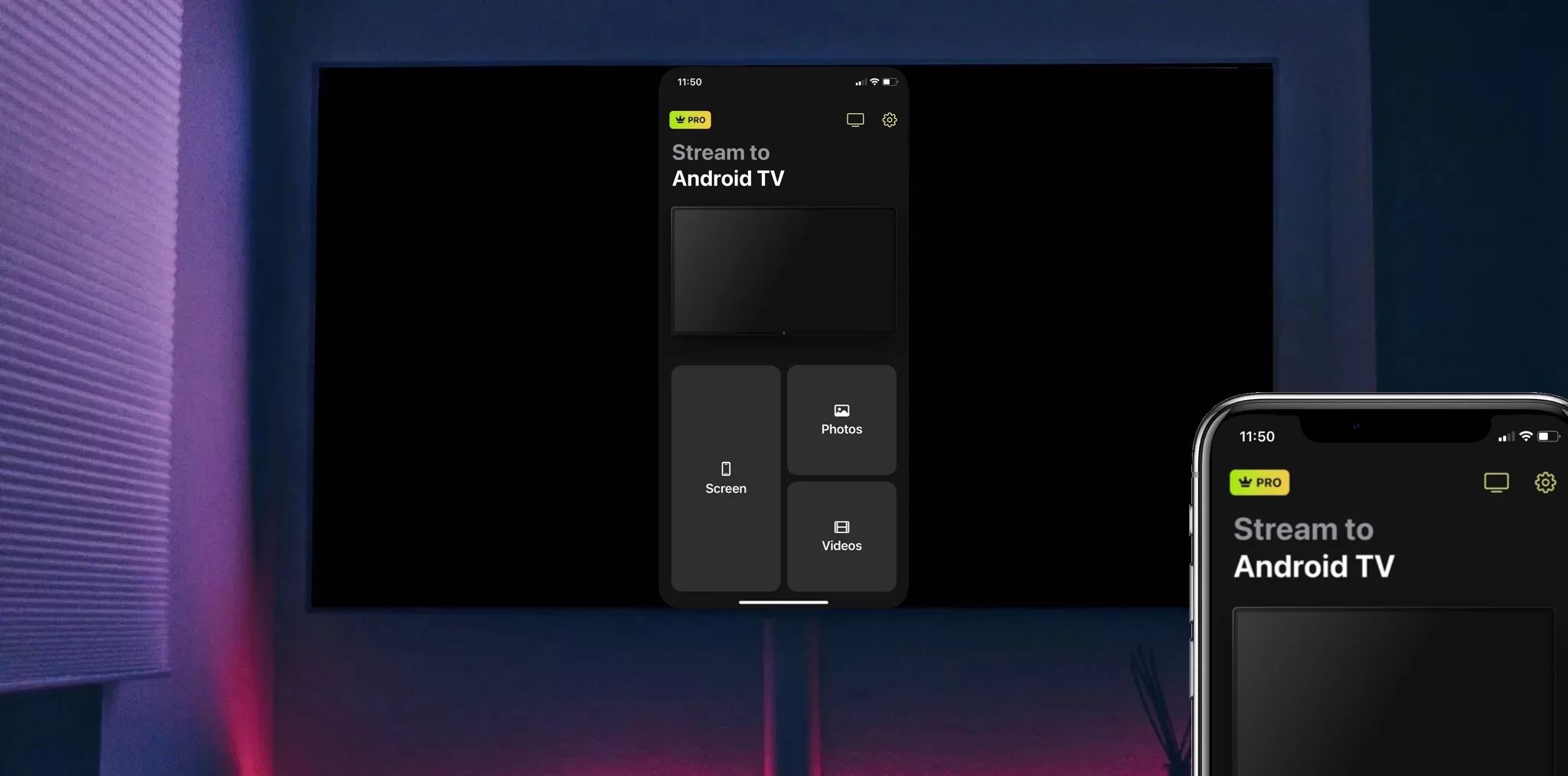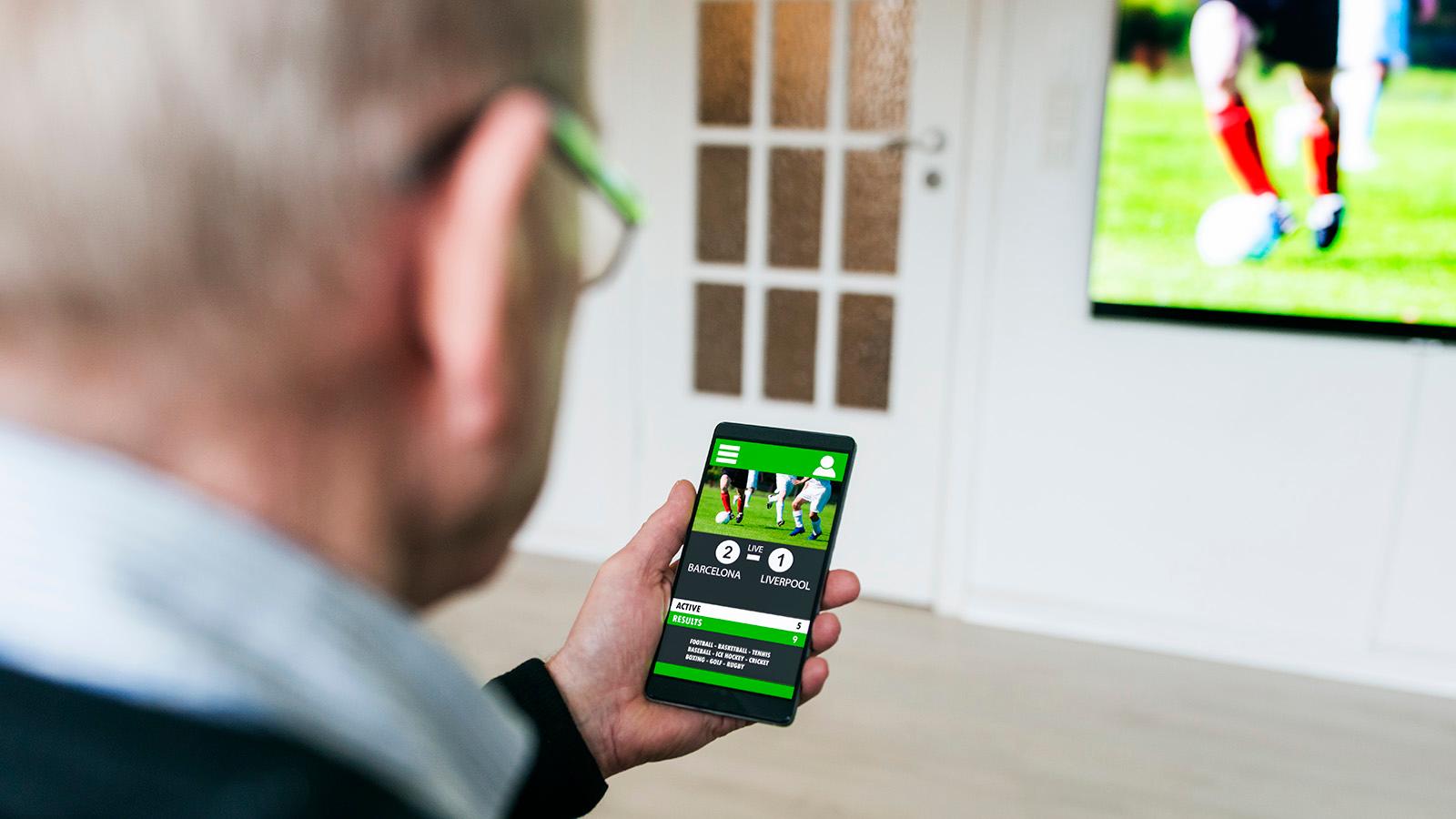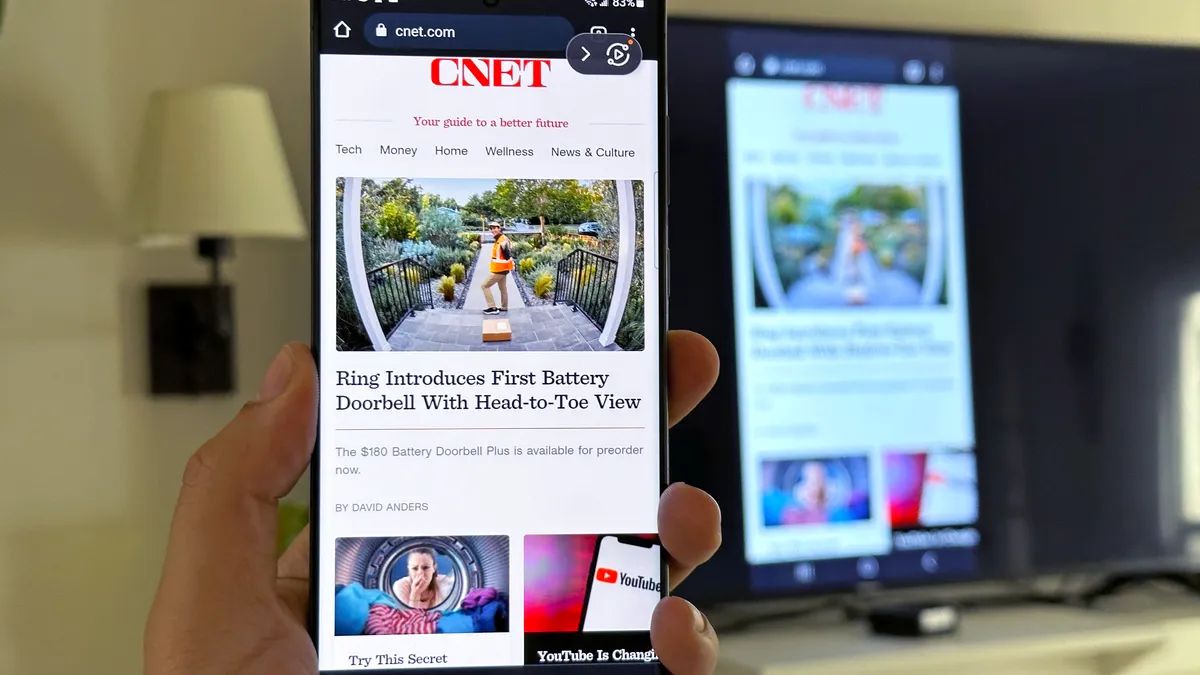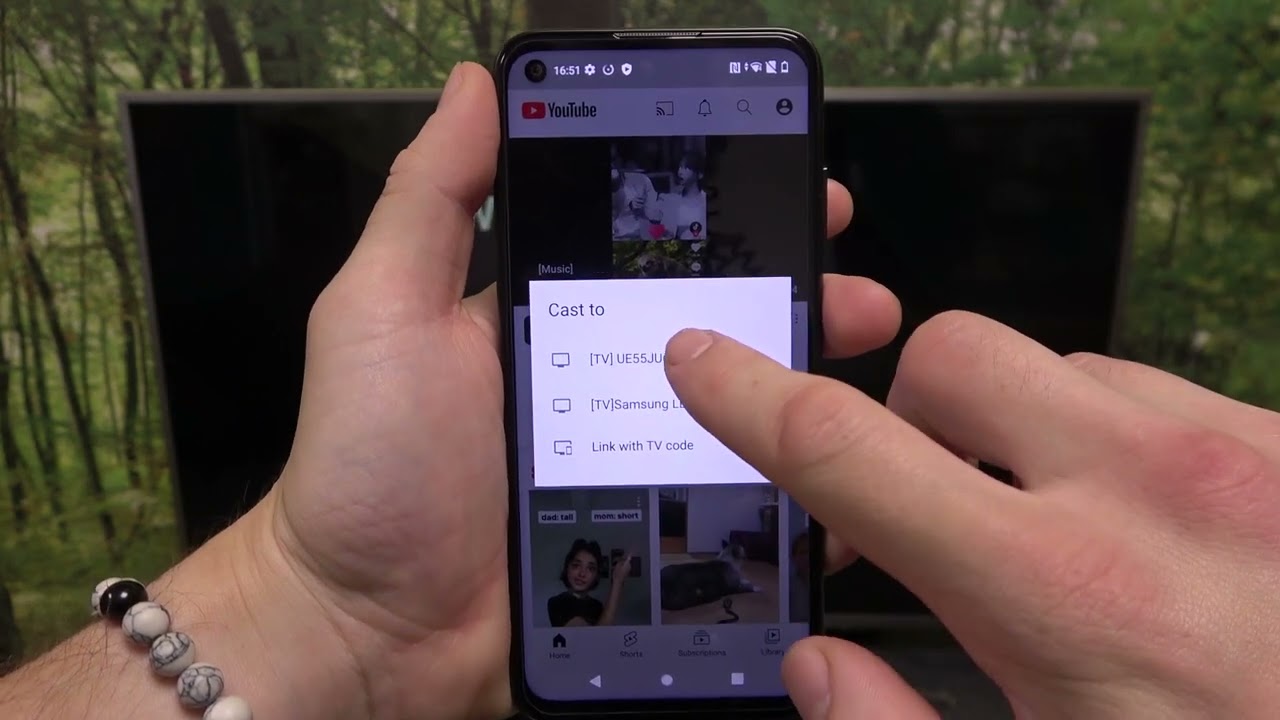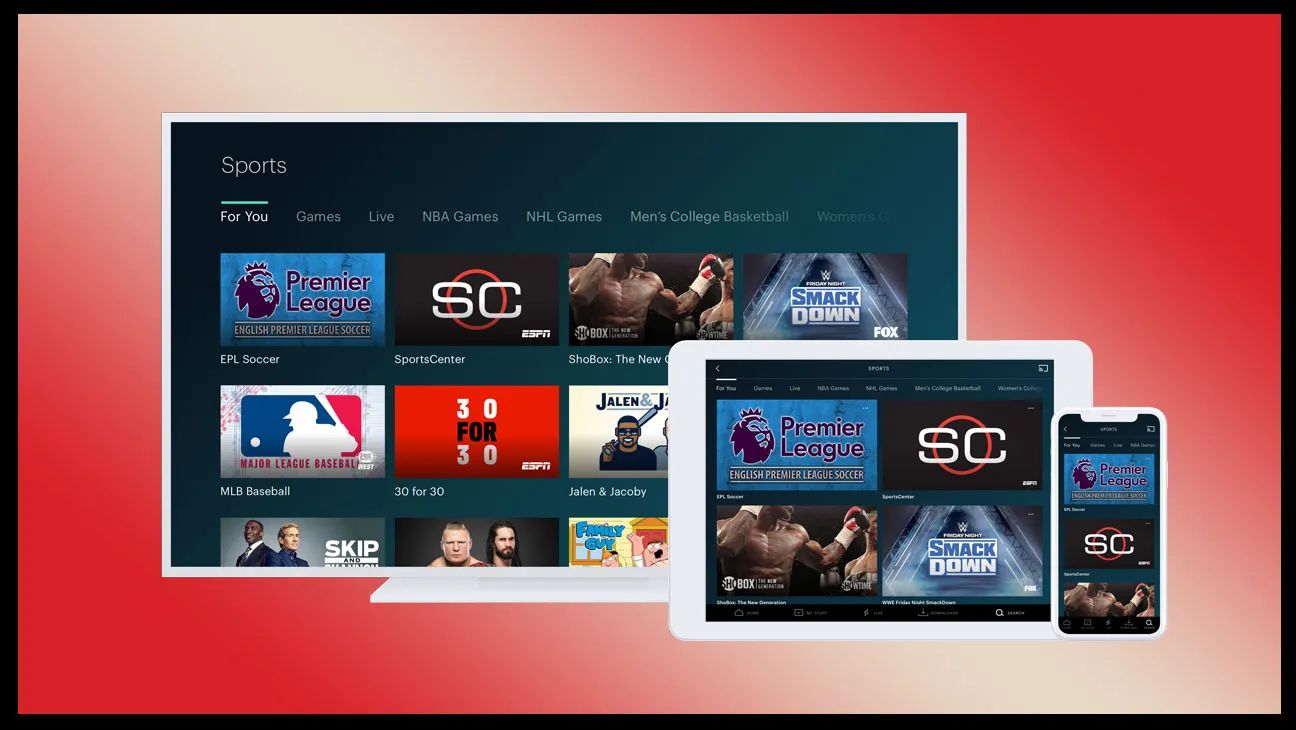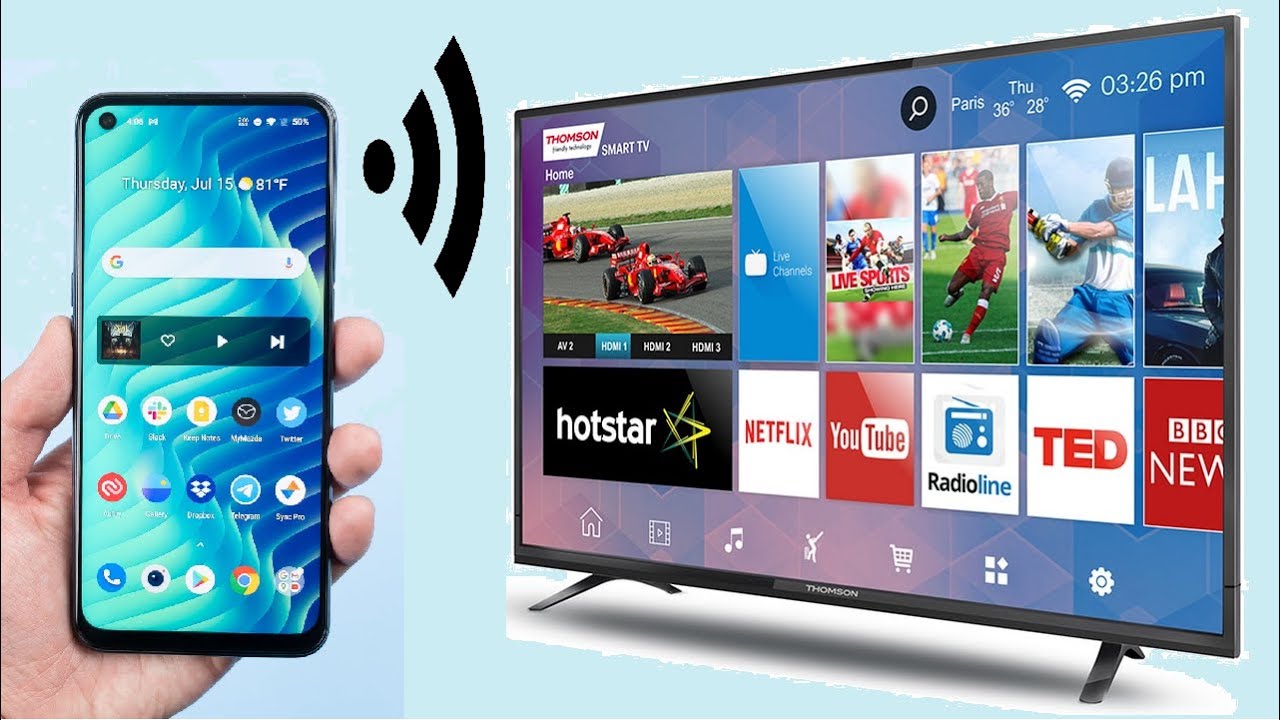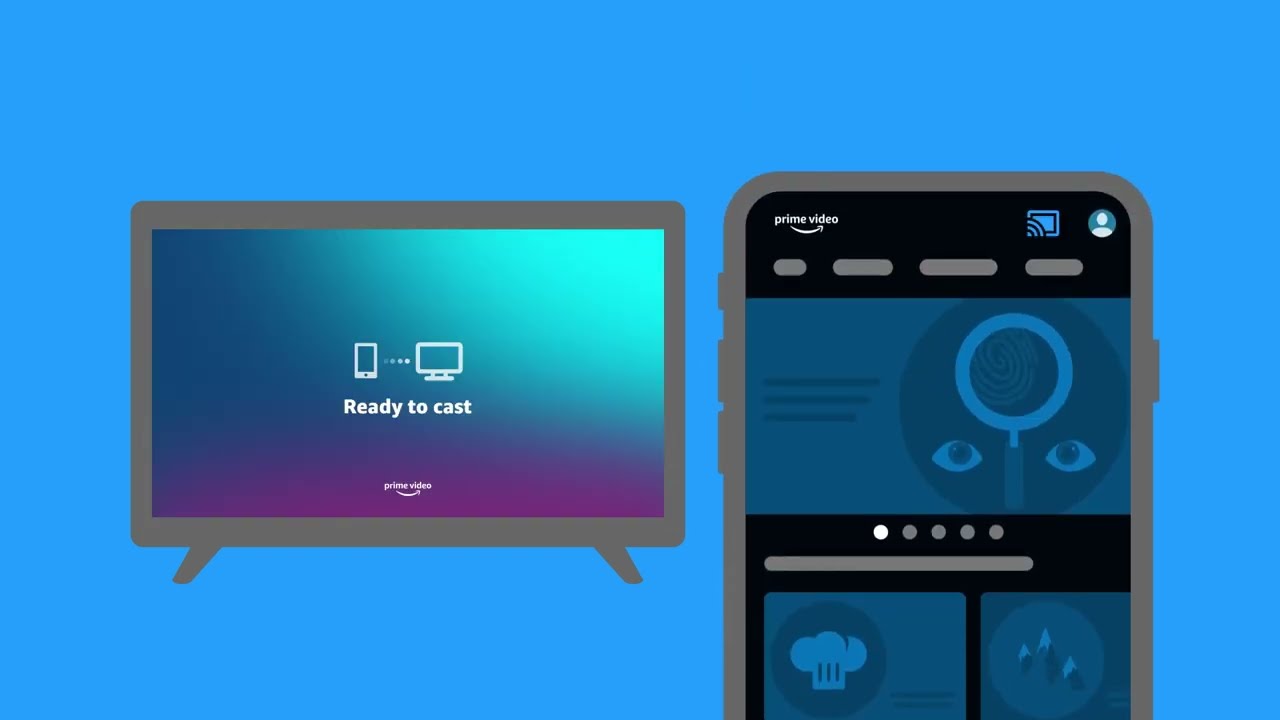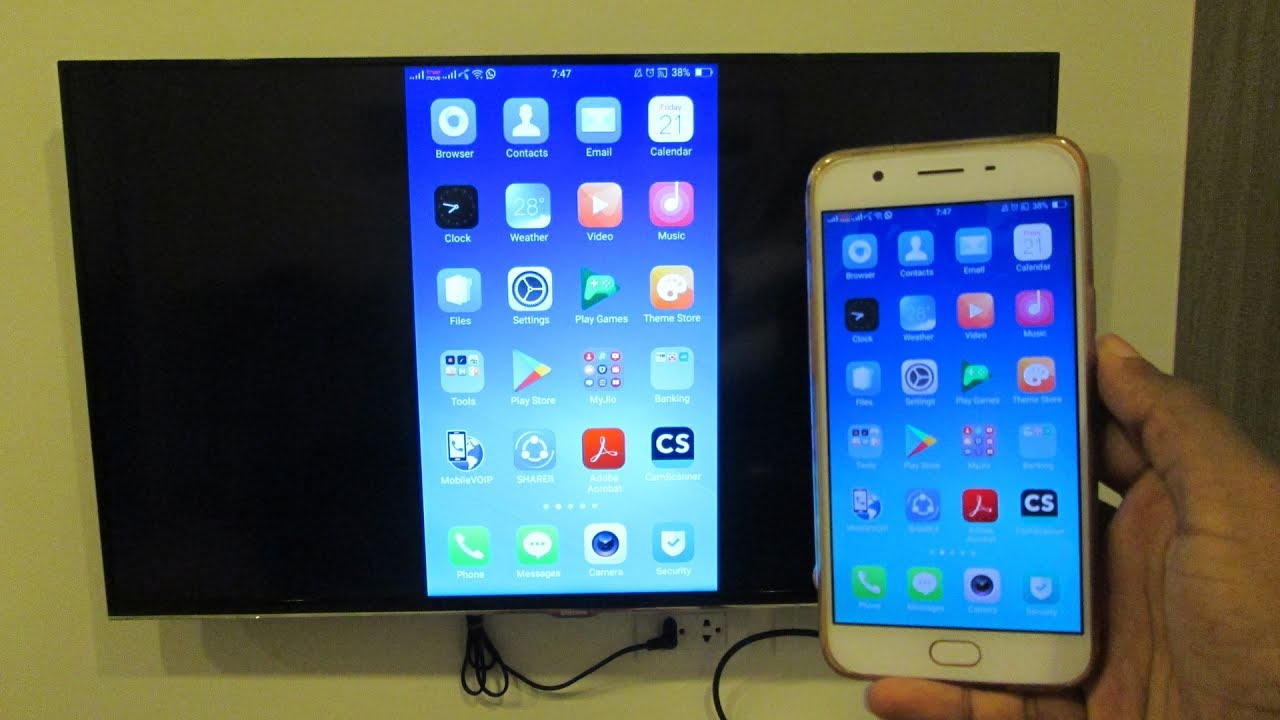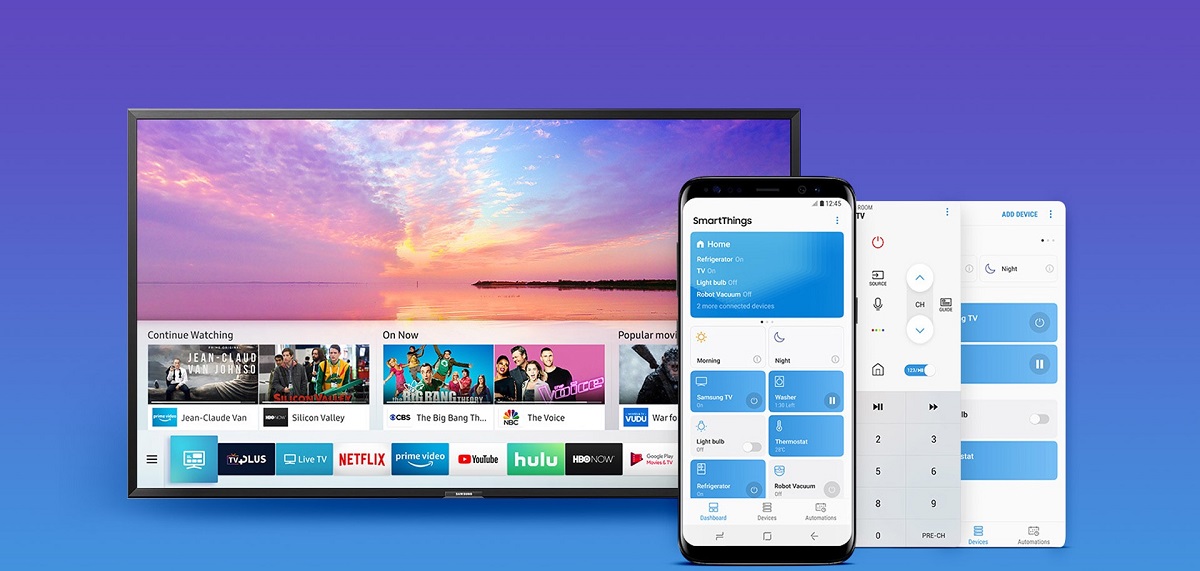Introduction
Unlock the Magic of Screen Mirroring: Your Ultimate Phone to TV Connection Guide
In today's digital age, where smartphones have become an indispensable part of our lives, the ability to seamlessly connect our mobile devices to larger screens has revolutionized the way we consume content. Screen mirroring, a technology that allows you to replicate your phone's display on a television or monitor, has opened up a world of possibilities for entertainment, productivity, and collaboration. Whether you want to stream your favorite movies, share photos and videos with friends and family, or deliver presentations in a professional setting, screen mirroring offers a convenient and versatile solution.
As we delve into the intricacies of screen mirroring, this comprehensive guide will equip you with the knowledge and skills to effortlessly connect your phone to a TV, unlocking a realm of endless entertainment and productivity. From understanding the concept of screen mirroring to exploring the devices that support this feature, and from the step-by-step process of screen mirroring to troubleshooting common issues, this guide is your go-to resource for mastering the art of phone to TV connections.
So, grab your smartphone and get ready to embark on a journey that will elevate your viewing experience, enhance your presentations, and transform the way you interact with your devices. Let's unravel the wonders of screen mirroring and unleash the full potential of your digital world.
What is Screen Mirroring?
Screen mirroring, also known as screen casting or media streaming, is a technology that enables you to replicate the display of your smartphone, tablet, or computer onto a larger screen, such as a television, monitor, or projector. This seamless mirroring process allows you to enjoy the content and functionality of your mobile device on a bigger canvas, providing an immersive and engaging viewing experience.
At its core, screen mirroring involves wirelessly transmitting the visual and, in some cases, audio output from a source device to a receiving display, effectively mirroring the entire interface in real time. This means that whatever appears on your phone or tablet screen – be it apps, videos, photos, games, or presentations – can be mirrored onto a TV screen, creating a shared viewing experience for you and your audience.
One of the key aspects of screen mirroring is its versatility, as it transcends the boundaries of entertainment and extends to productivity and collaboration. For instance, in a business or educational setting, screen mirroring facilitates seamless presentations, interactive discussions, and enhanced visual learning experiences. Furthermore, it allows for effortless sharing of content, making it an invaluable tool for teamwork and communication.
As technology continues to evolve, screen mirroring has become an integral feature of smart TVs, multimedia devices, and mobile operating systems, empowering users to break free from the limitations of small screens and embrace a more expansive and inclusive digital environment. Whether you wish to indulge in multimedia entertainment, deliver impactful presentations, or simply mirror your device for convenience, understanding the concept of screen mirroring is the first step towards harnessing its full potential.
Now that we’ve uncovered the essence of screen mirroring, let’s delve deeper into its myriad benefits and explore the transformative power it holds for both personal and professional use.
Benefits of Screen Mirroring
Screen mirroring offers a multitude of benefits that cater to various aspects of our digital lives, revolutionizing the way we consume content, collaborate, and interact with technology. Let’s explore some of the compelling advantages that screen mirroring brings to the table:
- Enhanced Viewing Experience: By mirroring your phone’s display to a larger screen, such as a TV, you can enjoy a more immersive and cinematic viewing experience. Whether you’re streaming movies, watching videos, or playing games, the expansive display enhances the visual impact and captivates your attention.
- Convenient Content Sharing: Screen mirroring simplifies the process of sharing photos, videos, and presentations with friends, family, or colleagues. Instead of huddling around a small device, you can effortlessly showcase your content on a bigger screen, fostering a more inclusive and engaging sharing experience.
- Productive Presentations: In professional settings, screen mirroring facilitates seamless presentations and interactive discussions. Whether you’re delivering a sales pitch, conducting a training session, or collaborating on projects, mirroring your device to a larger display empowers you to convey your message effectively and leave a lasting impression.
- Collaborative Learning: In educational environments, screen mirroring enriches the learning experience by allowing educators to share educational content, conduct interactive lessons, and engage students in a more dynamic and visual manner. This fosters a collaborative and participative learning environment.
- Effortless Device Interaction: With screen mirroring, you can seamlessly navigate your smartphone or tablet interface on a larger screen, eliminating the need to switch between devices for different tasks. This streamlines your workflow and enhances your multitasking capabilities.
- Wireless Convenience: Screen mirroring eliminates the hassle of dealing with cables and connectors, offering a wireless and clutter-free solution for connecting your devices to larger displays. This adds a layer of convenience and flexibility to your digital interactions.
These benefits underscore the transformative impact of screen mirroring, transcending the boundaries of entertainment, productivity, and collaboration. As we continue our exploration, we’ll delve into the devices that support screen mirroring and unravel the seamless connectivity options available to users.
Devices that Support Screen Mirroring
Screen mirroring is a versatile feature supported by a wide array of devices, each offering unique compatibility and connectivity options. Let’s take a closer look at the devices that embrace the magic of screen mirroring:
- Smartphones and Tablets: Many modern smartphones and tablets, regardless of the operating system they run on, support screen mirroring. Whether you have an Android device with “Cast” functionality, an iPhone with AirPlay, or a Windows device with Miracast, you can seamlessly mirror your device’s screen to a compatible TV or monitor.
- Smart TVs: Most smart TVs come equipped with built-in screen mirroring capabilities, allowing you to wirelessly mirror your smartphone or tablet directly to the TV without the need for additional hardware or third-party apps. This native support for screen mirroring makes it effortless to enjoy your mobile content on the big screen.
- Media Streaming Devices: Devices such as Apple TV, Chromecast, and Roku offer dedicated screen mirroring features, enabling you to cast content from your mobile device to the TV. These compact yet powerful streaming devices act as intermediaries, facilitating seamless communication between your mobile device and the TV.
- Computers and Laptops: Many modern computers and laptops support screen mirroring, allowing you to project your device’s display onto a larger monitor or projector. Whether you’re using Windows, macOS, or Chrome OS, you can leverage built-in screen mirroring functionality or third-party software to extend your screen real estate.
- Projectors: Certain projectors come equipped with wireless screen mirroring capabilities, enabling you to mirror the display of your smartphone, tablet, or computer for impactful presentations, immersive movie nights, or interactive learning experiences.
These devices, with their diverse screen mirroring capabilities, cater to a wide range of user preferences and technological ecosystems, ensuring that you can seamlessly connect and share your content across different platforms. As we venture into the intricacies of screen mirroring, we’ll uncover the step-by-step process of connecting your phone to a TV, empowering you to harness the full potential of this transformative technology.
How to Screen Mirror Your Phone to TV
Screen mirroring your phone to a TV is a straightforward process that varies slightly depending on the devices you’re using. Here’s a general guide to help you mirror your phone’s screen onto a TV:
- Ensure Device Compatibility: Check if your smartphone and TV support screen mirroring. Most modern smartphones and smart TVs offer screen mirroring capabilities, often referred to as “Cast,” “Screen Share,” or “Miracast.”
- Connect to the Same Wi-Fi Network: Ensure that both your phone and the TV are connected to the same Wi-Fi network. Screen mirroring typically relies on a stable Wi-Fi connection for seamless communication between the devices.
- Activate Screen Mirroring on Your TV: On your smart TV, navigate to the screen mirroring or casting option in the settings menu. Enable screen mirroring and wait for the TV to appear in the list of available devices.
- Initiate Screen Mirroring on Your Phone: On your smartphone, access the screen mirroring or casting feature in the settings menu. Select your TV from the list of available devices to initiate the mirroring process.
- Enjoy Seamless Mirroring: Once connected, your phone’s screen will be mirrored onto the TV, allowing you to enjoy your favorite content on a larger display. Whether you’re streaming videos, sharing photos, or delivering presentations, the mirrored experience offers enhanced visual impact.
It’s important to note that the specific steps for screen mirroring may vary based on the make and model of your devices and the operating systems they run on. For instance, if you have an iPhone and an Apple TV, you can utilize AirPlay for seamless screen mirroring. Similarly, Android devices often support screen mirroring via the Cast functionality, which is compatible with a wide range of smart TVs and media streaming devices.
By following these general guidelines and exploring the device-specific instructions provided by the manufacturers, you can effortlessly connect your phone to a TV through screen mirroring, unlocking a world of entertainment, productivity, and collaboration.
Troubleshooting Screen Mirroring Issues
While screen mirroring offers a seamless way to connect your phone to a TV, you may encounter occasional challenges that hinder the mirroring process. Here are some common issues and troubleshooting tips to help you overcome screen mirroring obstacles:
- Wi-Fi Connectivity: Ensure that both your phone and the TV are connected to the same Wi-Fi network. Inconsistent or weak Wi-Fi signals can disrupt the mirroring process, so positioning your devices closer to the router can help stabilize the connection.
- Device Compatibility: Verify that your smartphone and TV support screen mirroring. Some older models may not offer this feature, or it may be labeled differently in the settings menu. Refer to the user manuals or online support resources for detailed information.
- Software Updates: Keep your phone, TV, and any intermediary devices, such as media streaming devices, up to date with the latest software updates. Manufacturers often release patches and improvements that address compatibility issues and enhance the overall mirroring experience.
- Interference and Obstructions: Minimize potential sources of interference, such as other electronic devices or physical obstructions, that may disrupt the Wi-Fi signal. Additionally, ensure that there are no conflicting wireless signals in the vicinity that could interfere with the screen mirroring process.
- Third-Party Apps and Settings: If you’re using a media streaming device for screen mirroring, ensure that any third-party apps or settings related to mirroring are configured correctly. Sometimes, adjusting the settings or reinstalling the apps can resolve connectivity issues.
- Restart and Reset: If you encounter persistent issues, try restarting your phone, TV, and any intermediary devices. Additionally, performing a factory reset on the TV or resetting network settings on your phone can help eliminate potential glitches that impede screen mirroring.
By addressing these common issues and implementing the troubleshooting tips, you can mitigate connectivity challenges and optimize the screen mirroring experience. As technology continues to evolve, manufacturers are constantly refining and enhancing screen mirroring functionalities, ensuring a more seamless and reliable connection between your phone and TV.
Conclusion
Screen mirroring has emerged as a transformative technology, bridging the gap between our mobile devices and larger screens to deliver an immersive, collaborative, and versatile viewing experience. As we’ve journeyed through the intricacies of screen mirroring, we’ve uncovered its myriad benefits, explored the devices that support this feature, and delved into the step-by-step process of connecting your phone to a TV. Additionally, we’ve addressed common troubleshooting issues, empowering you to navigate the challenges that may arise during the mirroring process.
From enhancing your entertainment options and simplifying content sharing to facilitating impactful presentations and collaborative learning experiences, screen mirroring has redefined the way we interact with our devices and engage with digital content. Whether you’re a tech enthusiast, a professional seeking seamless presentation solutions, or an educator striving to create dynamic learning environments, the versatility of screen mirroring offers boundless opportunities for innovation and connectivity.
As technology continues to evolve, the landscape of screen mirroring is poised to expand, offering even more seamless, intuitive, and feature-rich solutions for connecting your phone to a TV. With advancements in wireless connectivity, device compatibility, and user-friendly interfaces, the future of screen mirroring holds the promise of elevating our digital interactions to new heights.
Armed with the knowledge and insights shared in this guide, you are well-equipped to embark on a screen mirroring journey that transcends the confines of small screens and embraces the expansive canvas of larger displays. Whether you’re unwinding with your favorite content, delivering impactful presentations, or fostering collaborative interactions, screen mirroring empowers you to amplify your digital experiences and unlock the full potential of your devices.
So, seize the magic of screen mirroring, and embark on a seamless, captivating, and boundless journey of connectivity, creativity, and shared experiences. Embrace the wonders of screen mirroring, and let your digital world unfold in all its brilliance and grandeur.







